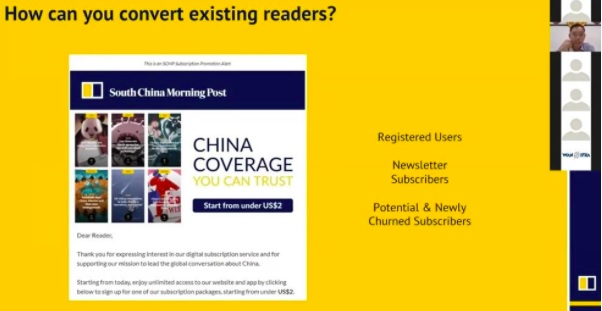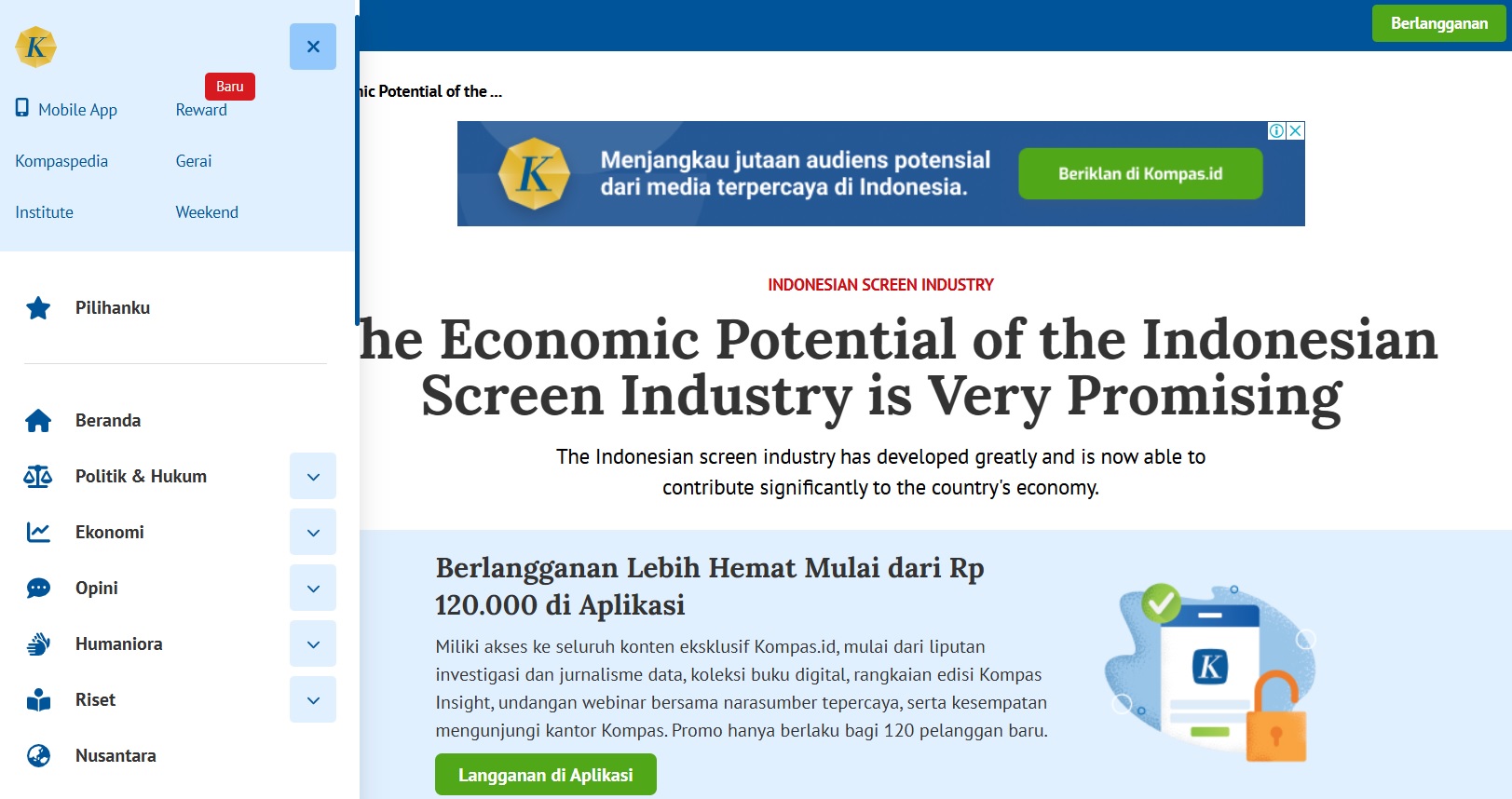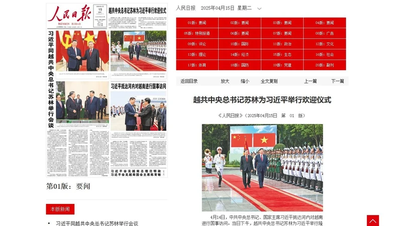(CLO) In an ever-changing media environment, media organizations are facing a difficult problem: How to balance readership and advertising revenue to ensure financial stability?
At the Asia Media Leaders Conference, Andy Budiman from Kompas and Catherine So from the South China Morning Post shared valuable insights into how leading media organizations are finding answers to this question.

Catherine So and Andy Budiman at the Asia Media Leaders Summit 2024.
Balancing subscription and advertising revenue
Kompas, one of Indonesia’s leading newspapers, is looking to diversify its revenue streams by implementing a digital subscription model. However, high unsubscribe rates (40% per year) and low credit card payments (only 8%) are hindering this goal. To achieve 50% annual growth, Kompas must not only attract new customers but also retain existing ones.
While ideally users would voluntarily sign up for the service when experiencing the product, the reality is that the Indonesian market is still quite new to this model, requiring Kompas to invest more in marketing activities to attract new customers. This not only increases operating costs but also poses many challenges in measuring the effectiveness of each channel.
“The Indonesian market is characterized by relatively low spending on online services. This is clearly reflected in our ARPU, with a trial subscription package costing only around 10,000 rupiah ($0.65),” said Andy Budiman.

SCMP's subscription revenue is growing. Photo: SCMP
The South China Morning Post (SCMP) offers a contrasting success story. Based in Hong Kong, the newspaper has increased its digital market share from 10% to 40% and expanded its global reach eightfold.
Digital subscriptions increased 130% within 3-4 years of implementing a paywall.
“This success stems from strategic investments in technology, data analytics and content diversity. SCMP has expanded its offerings to include tailored subscription packages and premium products that appeal to both global business leaders and a younger audience,” said Catherine So.
Reviving advertising revenue
While digital subscriptions are gaining traction, advertising remains a cornerstone for many media organizations. Kompas and SCMP demonstrate how innovation can revive this traditional revenue stream.
SCMP has moved to premium programmatic advertising, emphasizing brand safety to attract high-value advertisers. Recognizing advertisers’ concerns about negative associations, SCMP curates content that aligns with its brand values. This includes niche publications such as Style and Postmag, which cater to luxury and lifestyle audiences.
Currently, 60% of SCMP's revenue comes from advertising, 30% from subscription fees and 10% from events.
Kompas, on the other hand, is exploring ways to diversify its advertising revenue. Events, book publishing, and targeted content are emerging as significant contributors. By integrating these services into its ecosystem, Kompas hopes to reduce its dependence on traditional advertising revenue and create sustainable revenue streams.
Diversifying Revenue Sources: The Key to Sustainability
Revenue diversification is emerging as a central theme in media revenue strategies. Both Kompas and SCMP are leveraging their brand equity to explore non-traditional revenue streams.

Indonesia's Kompas newspaper is very active in increasing non-traditional sources of revenue. Screenshot of Kompas newspaper
SCMP’s events business model is a prime example of focusing on quality over quantity. By hosting large-scale and influential events such as the Family Business Conference and the China Conference, SCMP has not only attracted top leaders but also achieved impressive revenue growth.
“ After the pandemic, we decided to focus on quality over quantity of events. This paid off beyond expectations as not only did our revenue increase, but our profits also grew by 50%. Some events even doubled their revenue due to the positive buzz,” So said.
Likewise, Kompas is diving into exclusive content and e-wallet payments to cater to a wider audience. “By addressing local market challenges, such as low credit card usage, Kompas is tailoring its products to suit the needs of its audience while maintaining quality journalism,” Budiman shares.
Reader-centric
What Kompas and SCMP have in common is their commitment to audience-centric approaches. By understanding their audience’s preferences and behaviors, these organizations are creating products and experiences that have a profound impact.
SCMP, for example, uses AI to enhance content personalization and optimize its newsletters, boasting open rates of 40-50%. It also invests in SEO and differentiated content to appeal to a global audience, increasing its reach from 4 million to 40 million monthly users.
Kompas is focusing on engagement metrics to measure subscriber activity, emphasizing the importance of content relevance and accessibility.
Hoang Anh (according to SCMP, Kompas, Wan-Ifra)
Source: https://www.congluan.vn/hai-to-bao-hang-dau-chau-a-chia-se-cach-can-bang-nguon-thu-tu-doc-gia-va-quang-cao-post330802.html



![[Photo] Prime Minister Pham Minh Chinh works with the Standing Committee of Thai Binh Provincial Party Committee](https://vphoto.vietnam.vn/thumb/1200x675/vietnam/resource/IMAGE/2025/5/12/f514ab990c544e05a446f77bba59c7d1)

![[Photo] Prime Minister Pham Minh Chinh starts construction of vital highway through Thai Binh and Nam Dinh](https://vphoto.vietnam.vn/thumb/1200x675/vietnam/resource/IMAGE/2025/5/12/52d98584ccea4c8dbf7c7f7484433af5)

![[Photo] Prime Minister Pham Minh Chinh receives Swedish Minister of International Development Cooperation and Foreign Trade](https://vphoto.vietnam.vn/thumb/1200x675/vietnam/resource/IMAGE/2025/5/12/ae50d0bb57584fd1bbe1cd77d9ad6d97)




























































































Comment (0)